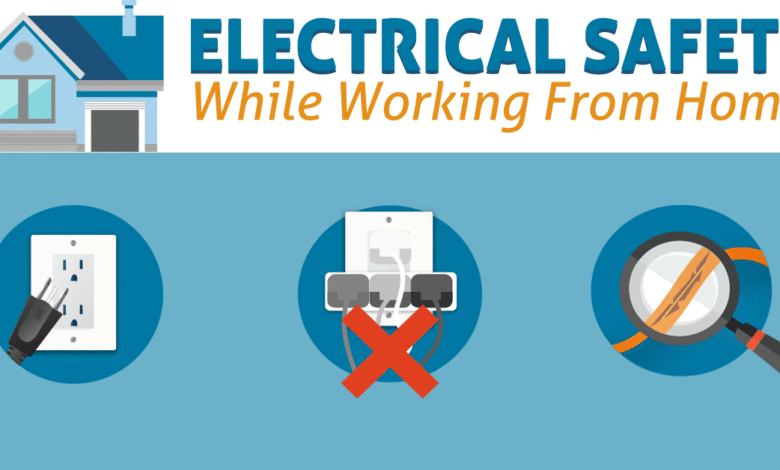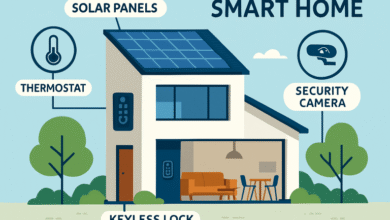Simple Steps To Safer Electrical Systems At Home

Key Takeaways
- Routine safety checks can dramatically reduce the risk of electrical fires.
- Upgrading outdated wiring brings homes up to modern safety codes.
- Small changes, like adding surge protection and GFCIs, prevent costly damage.
- Involving professionals for larger projects ensures long-term safety and compliance.
- Families can prevent accidents by practicing safe appliance and cord habits.
Why Electrical Safety Matters
Electricity quietly powers nearly everything in our daily lives, from kitchen gadgets and televisions to heating and air conditioning. Many people take this convenience for granted, rarely stopping to think about the potential dangers hidden within the wiring and outlets that crisscross their homes. However, overlooking electrical safety can lead to serious consequences, including costly repairs, injuries, or even life-threatening disasters. A practical starting point for anyone looking to improve their home’s safety is following an electrical tune-up checklist at least once a year. Such a checklist helps homeowners systematically inspect their systems, ensuring that problems are quickly addressed. Many home fires are preventable simply by being proactive about safety. When families make electrical safety a regular habit, the household stays safer, minimizing disruptions.
Common Hazards In Homes
The most dangerous electrical hazards often go unnoticed. It’s easy to miss outlets overloaded by too many devices, power strips hidden under furniture, or extension cords running under rugs. These seemingly harmless actions can create hot spots, wear down insulation, and eventually spark a fire. Appliances with frayed or damaged cords should always be replaced or repaired without delay. Many older homes were built with outdated wiring methods like knob-and-tube or aluminum, which don’t always meet modern safety standards and are much more prone to problems. Water, another hidden hazard, poses extra dangers in kitchens, bathrooms, laundry rooms, or garages where moisture is common. The National Fire Protection Association notes that electrical failures or malfunctions each year account for nearly 46,700 home fires in the U.S., causing hundreds of deaths and injuries and over a billion dollars in property damage. Recognizing and proactively addressing these risks can make a crucial difference in keeping your home safe.
Routine Checks Make A Difference
It’s surprising how many routine checks can help identify lurking electrical issues. Checking wall outlets for unusual warmth, soot marks, or humming sounds can point to trouble behind the scenes. Circuit breakers that trip frequently or light switches that are hot to the touch indicate potential system overloads or faulty wiring. These symptoms shouldn’t be ignored. Taking the time to regularly examine visible cords, surge protectors, and power strips for damage can save countless headaches. Homeowners should also test smoke detectors and ground fault circuit interrupters (GFCIs) every few months, pressing the “test” and “reset” buttons to verify the rapid cutoff feature is functioning. The U.S. Consumer Product Safety Commission emphasizes that simple steps, such as unplugging appliances before cleaning or replacing bulbs, can prevent avoidable incidents. These quick checks shouldn’t take more than a few minutes, but the potential benefit is enormous.
When To Modernize Your Electrical System
Modern living has changed the demands we place on our electrical systems. If your home was built before the 1980s, it’s possible the wiring wasn’t designed for current needs. New appliances, smart devices, and home theaters demand more power, and outdated systems may struggle to keep up. Dimming or flickering lights, persistent buzzing from electrical panels, or outlets that spark when used are signs the system might be overloaded or worn out. Upgrading isn’t just about comfort—it’s about safety. Homes over 40 should have periodic professional inspections of their panels, wiring, and outlets. Upgrades may involve replacing circuit breakers, rewiring, or adding dedicated appliance circuits. Some home insurance providers require system updates before offering or renewing policies, underlining the significance of a safe, modern system. When improvements are made proactively, families avoid many common hazards of outdated wiring.
Smart Upgrades For Safer Homes
Not all improvements require a complete overhaul. Many upgrades are simple, effective, and affordable. For areas prone to moisture exposure—such as kitchens, bathrooms, and outdoor spaces—installing ground fault circuit interrupters (GFCIs) helps protect against electric shock. These devices immediately reduce the power when an imbalance is detected, preventing serious injuries. Installing surge protectors or whole-home surge protection can safeguard valuable electronics from damage during storms or utility surges, which are increasingly common due to weather extremes. Upgrading to arc fault circuit interrupters (AFCIs) helps detect dangerous arcing conditions in wiring, which can ignite fires even when they’re not visible. Adding tamper-resistant outlets creates a child-safe environment, reducing the risk of accidents in homes with curious little ones. While these upgrades may seem minor, they contribute significantly to safety and peace of mind.
Professional Help Is Worth The Investment
Even skilled DIYers should know their limits when it comes to electrical repairs. Licensed electricians offer experience, in-depth code knowledge, and advanced tools for diagnosing and addressing complex issues. They can spot hidden hazards, such as outdated connections inside walls or improper grounding, which can sneak by even the most diligent homeowners. When undertaking major projects like a basement finish, kitchen remodel, or panel upgrade, a professional ensures every step is up to code and documents the work for insurance or resale purposes. It’s wise to ask for references and proof of licensing and to review feedback from previous clients. The right expert can deliver long-term safety, reliability, and improved property value. Electrical work isn’t just another project; it’s a vital component of a safe, functional home.
Everyday Habits That Keep You Safe
Developing strong habits around electricity makes every home safer. Unplug appliances when they aren’t in use, especially high-wattage items like space heaters, irons, or hair dryers. Never force a plug into an outlet or overload sockets with multiple adapters. Simple steps, such as never running cords under rugs or furniture and regularly dusting behind refrigerators or dryers, reduce the possibility of overheating or damage.
- Perform monthly cord checks for fraying and throw away any unsafe ones.
- Install nightlights or low-wattage bulbs in hallways to prevent nighttime accidents.
- Use outlet covers in rooms with children or pets to prevent accidental shocks.
- Educate all household members about the importance of electrical safety, setting a good example for kids with safe habits.
Consistency is key—when safe habits become second nature, everyone benefits from a more secure home.
Staying Informed Protects Your Home
Keeping up with the latest advancements in home electrical safety is a smart move for any homeowner. Technology continues to evolve, bringing in smart surge protection, app-connected monitoring systems, and improved home automation that can spot malfunctions before they escalate. Emerging research and smart-home devices now allow homeowners to monitor their electrical systems in real time, making it easier than ever to prevent fires and accidents. For those looking to go a step further, staying updated on emerging technology in electrical fire prevention helps ensure that your approach adapts as the risks do. Seeking information from trusted resources and setting an annual reminder to review safety practices can help families stay up-to-date, reduce accidents, and protect what matters most in their homes.





